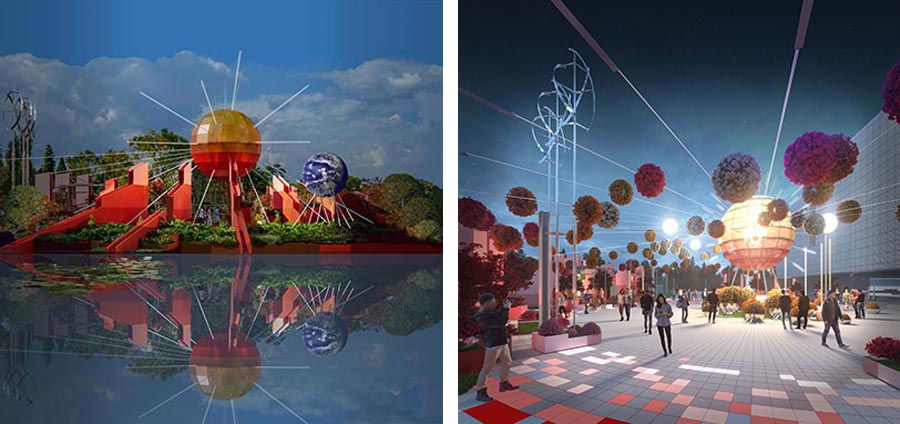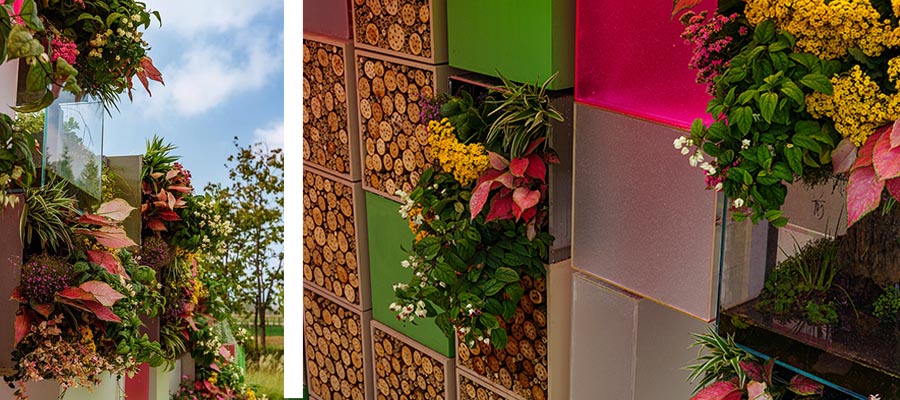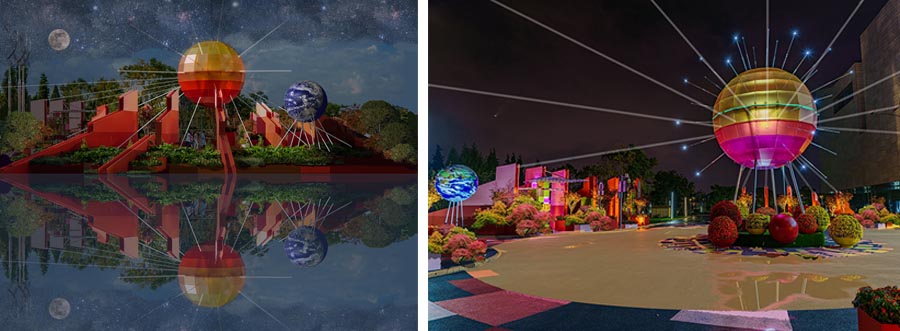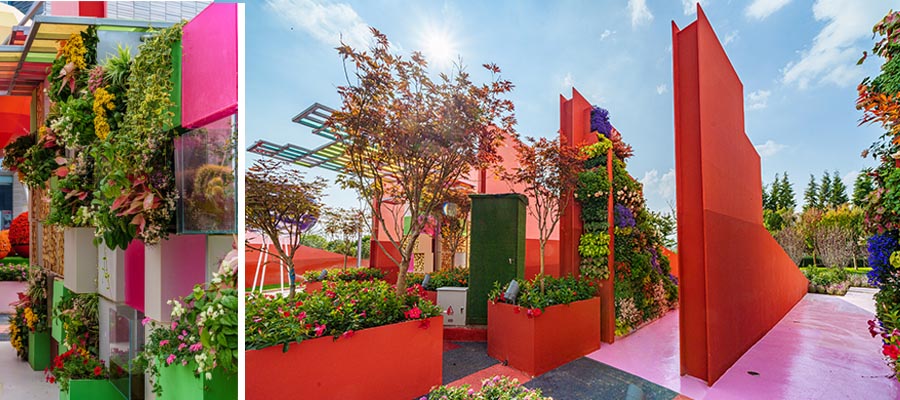Chetwoods, the award-winning architecture practice, designed the centrepiece of the Fifteenth United Nations Biodiversity Conference, which opened in Kunming, China, on 11 October.
The innovative ‘Future City Garden: Nature and City’’ – a thought-provoking depiction of biodiversity through architectural and landscape design – welcomes delegates as they arrive at the conference centre building hosting COP 15. The entire garden will be equivalent to over 10 of the largest ever displays at London’s world famous Chelsea Flower Show.


The Future City Garden encapsulates COP 15’s ideals, using a representation of the Sun at its centre. Chetwoods’ has used a hydrogen fuel cell – an innovative form of clean and efficient energy – to create this powerful symbol of life, with a surface made up of photovoltaic panels.
Five gardens radiate from the Future City Garden following a circular pattern, each of which communicates messages relating the various themes of food, sleep, shelter, air and water. In summary, these are:
- Food garden – an area incorporating herb walls and growing shelves to demonstrate the importance of food production and the need for cities to shorten supply chains by growing food on vertical and horizontal surfaces. It is initially structured as a series of urban allotments which progressively move into a more rural setting featuring orchards and mixed-use hedges which support birds, insects, bees and butterflies.
- Sleep garden – a quiet space in which visitors are encouraged to leave the city behind and lose themselves in nature. The garden entrance is characterised by a number of large mirrors configured in a way that produces multiple reflections and gives a sense of the city’s chaos. As visitors pass these mirrors, they move into a series of quiet, private spaces at the focus of which is a secluded woodland area.
- Shelter garden – a space providing shelter for all living beings, not only humans but also insects and microorganisms. The shelter provided is both vertical and horizontal in design, in the form of a translucent canopy and a series of shelves, boxes and ledges.
- Air garden – this aims to demonstrate the benefits of flora in reducing air pollution as well as introducing visitors to the sensory benefits of air itself as they become aware of the sounds and movement of the wind through trees and grasses. The plantings include conifers – as pollution ‘eaters’ – and aromatic shrubs and flowers, heightening the intensity of smell which visitors can experience. This garden combines the restorative and enhancing powers of nature; it also features three helical wind turbines to emphasise the benefits of sustainable energy generation to the planet.
- Water garden – an area focusing on rainwater harvesting as a means of addressing water scarcity in some parts of the world. It demonstrates the potential for how existing water features can be used more effectively.

Laurie Chetwood, Chairman of Chetwoods, said, ‘It was a great privilege to be asked to contribute the centrepiece for the COP 15 UN Biodiversity Conference. Our Future City Garden reflects the ever-present influence of nature in architecture and design and serves to demonstrate our concern – as architects – for the natural environment.
‘Chetwoods has created a number of other concept gardens in China in recent years. We pride ourselves on being bold and brave and on using design to stimulate both thoughts and actions. Design doesn’t just exist to create landscapes or buildings but to convey messages and change mind-sets. Addressing the important issue of biodiversity and the role it has in all our lives – not least in the context of food security – was a challenge we were pleased to take up.

‘While the Future City Garden has a serious point to make, it’s also fun. I hope that people will enjoy visiting it, remember its messages and be motivated by them, thereby enriching future decisions on this extremely important global topic.’

Tim Briercliffe, Secretary General to AIPH, said, ‘I am fascinated to see the Future City Garden: Nature and City at the UN Convention on Biological Diversity. As the world’s champion for the power of plants, AIPH is impressed by the central role that plants and nature are now taking in conversations about the future of our cities. The creative ideas brought to life in Kunming demonstrate gardens and nature as the foundation of life. The five areas of the Future City Garden clearly demonstrate the functional aspects of plants in providing food, fresh air, shelter, and the restorative power of nature that we all need. I trust that its message will be well received by global leaders following COP15.’









